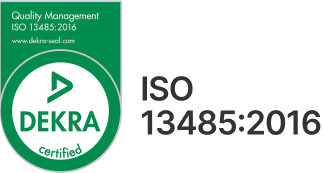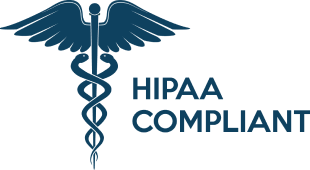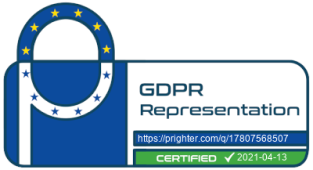Remote Heart Health Assessments: Tackling the World’s Leading Cause of Death
There is a significant inconsistency in the average person’s risk of heart disease and the extent to which it concerns them. In a study conducted by the American Heart Association, while about half of the women surveyed were aware that heart disease is the leading cause of death in women, “only 13% said it was their greatest personal health risk,” while additional “survey data suggest that on a day-to-day basis, women still worry more about getting breast cancer — even though heart disease kills six times as many women every year.”
However, cardiovascular diseases (CVDs) are indeed the leading cause of death globally, taking an estimated 17.9 million lives each year – an estimated 32% of deaths worldwide. Moreover, More than four out of five CVD deaths are due to heart attacks and strokes, and one third of these deaths occur prematurely in people under 70 years of age.
Heart disease is also the world’s most costly disease
Not only are heart diseases the leading cause of death worldwide, they are also the most costly. In the U.S. alone, heart diseases cost a staggering $193 billion per year, coming in ahead of diseases like cancer ($157 billion) and diabetes ($176 billion). Moreover, according to the CDC, “evidence is emerging that CVDs and other noncommunicable diseases contribute to poverty due to catastrophic health spending and high out-of-pocket expenditure.”
Despite the alarming mortality and morbidity rates and the exorbitant costs associated with cardiovascular diseases, a large number of people, particularly women, remain unaware of their risk for cardiovascular diseases. This lack of awareness becomes especially troubling when considering that heart diseases can often be managed or prevented. A considerable number of deaths, disability and healthcare costs can be avoided if payers and providers help people understand their risks and the actions they can take to mitigate them.
Cardiovascular disease prevention
Shockingly, the CDC estimates that nearly 80% of cardiovascular diseases, including heart disease and stroke, are preventable. According to the American Heart Association, getting frequent heart health assessments, carefully monitoring risk factors for heart disease, and implementing heart healthy behaviors like managing stress, being physically active, getting more sleep, and maintaining a healthy diet can help reduce risk of heart disease.
Furthermore, paying particular attention to the three major risk factors for heart disease can go a long way in heart disease prevention. These include smoking, hypertension and high cholesterol levels. Given that both high blood pressure and high cholesterol levels often show no symptoms, they must be frequently checked in order to increase early detection and manage them effectively.
So what exactly does this mean for payers?
The lack of discussion and awareness surrounding heart diseases should be a profound concern for insurers, specifically because the costs associated with them can be significantly reduced. Moreover, insurers are uniquely positioned to become their clients’ wellness partners and help them take control of their health. Here are a few actions insurers can take to help prevent cardiovascular diseases:
- Help your clients know their risk– Most people are unaware just how high their risk for heart disease might be and how serious the complications that may result due to high blood pressure are. Insurers should bolster efforts to educate clients about the prevalence of heart disease, its connection to certain risk factors, and the importance of getting heart health assessments.
- Make heart health assessments more accessible- Since both high blood pressure and high cholesterol levels often present no symptoms, many people don’t know they suffer from them. In fact, the WHO reports that nearly half of people with high blood pressure are unaware they have it. Consequently, insurers ought to encourage clients to get frequent heart health assessments and make blood pressure measurement more accessible by eliminating the need for costly devices and enabling smartphone or laptop-based health monitoring.
- Incentivize healthy lifestyle choices– A study conducted on patients with heart failure demonstrated that the difficulty of changing habits prevented clients from maintaining healthy diets and behaviors. Innovative insurers like Vitality UK and YuLife are enhancing their wellness programs with behavioral science and using digital tools to help incentivize healthy behaviors like exercise, diet, stress reduction, and better sleep health, by enabling clients to track steps, vital signs, and stress levels and rewarding progress. Insurers can then use health data shared by clients to help clients understand their heart health needs and provide them with personal suggestions.
- Consider geographical barriers to care– Often, patients “living in poverty or rural areas, are more adversely affected by the effect of disease yet do not have access to appropriate or immediate health care.” To help address geographical barriers to care, insurers ough to consider patients with low access to clinics or care centers and meet patients where they are through digital technologies that support remote heart health assessments and virtual telehealth visits.
- Improve medication adherence– Medication adherence is an additional cornerstone of CVD management and prevention. Studies have shown that digital tools providing patient education, reminders, fixed-dose combination therapy and team-based care approach are most effective at helping patients improve medication adherence. Insurers can use digital tools to help patients keep track of which medications they take and help make adherence consistent.
Make heart health assessments accessible to people worldwide today
Make heart health assessments accessible to people worldwide today. Enable anyone, anywhere to measure their blood pressure, stress levels, heart rate, and more by simply looking into a smartphone for a 35-60 second spot check, or for continuous checks, by wearing a Polar Verity Sense™ optical heart rate sensor. Integrate Binah.ai’s SDK to allow clients access to a personal wellness score—a user-friendly metric that can help predict the cardiovascular risk of patients, making the understanding of heart health simpler than ever for your clients.
To learn more about how insurers can use Binah.ai to help clients protect their heart health, schedule a demo now.

 close
close





